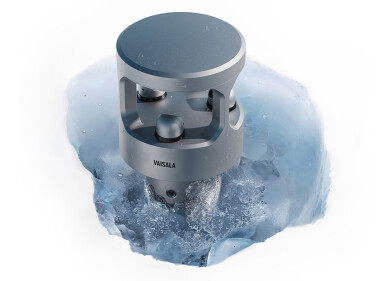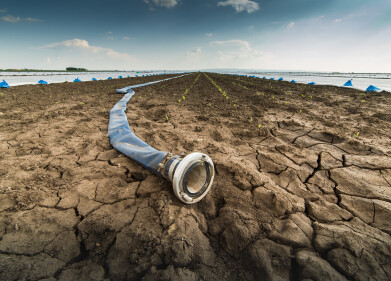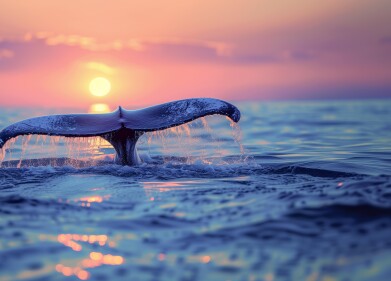Weather monitoring
Wind measurement on land and sea
Dec 02 2020
LCJ Capteurs are celebrating 20 years in business. The company founder, Mr Christian Lamiraux, was a proficient engineer in the marine electronics sector and formerly a member of the French Navy’s aeronautic team. He was also part of CGG (SERCEL) and a specialist in hyperbolic marine radio-positioning, GPS and differential GPS.
Mr Lamiraux also set up MLR Electronique in 1979. MLR specialised in radio-positioning equipment for fishing boats. He sold MLR Electronique in 1996 after having expanded the range of products to include pleasure boats, which made them a highly respected company throughout the whole European continent.
Mr Christophe Michel, the current CEO of LCJ Capteurs, worked for 18 years at MLR Electronique and joined Mr. Lamiraux in 2000, shortly after the creation of LCJ Capteurs. Mr. Michel took over all the company‘s shares in 2012.
LCJ Capteurs was created with the aim of designing a static and robust wind measurement sensor, for the marine sector, a logical idea as the LCJ team were very familiar with the needs of the marine electronics market. The sensor had to be lightweight and robust so it could be mounted at the head of the mast, as well as compact, with low power consumption - especially for yachts and sailboats on which energy consumption needs to be kept to a minimum. Ultrasonic measurement technology has become a must on a mast and LCJ Capteur’s CV3F fulfilled all of the tough demands of the marine market.
LCJ Capteurs was supported by a state agency (ANVAR) for research and development, and patented its CV3F model for the first time. Then came the marketing part of this innovative concept. As Messrs. Lamiraux and Michel were already well known in the marine electronics industry, the LCJ Capteurs reputation was increasing rapidly, especially for the professional boat market with the success of the CV3F. The reliability of this product has contributed considerably to the company's growth in the marine market.
The ability to innovate and adapt was also paramount for the French company. After the mass production of the CV3F, market feedback revealed some imperfections, especially in rainy weather and on stable vessels. These drawbacks were adjusted and then patented around LCJ’s CV7 version that followed. The innovation of the CV7 focused on the geometry of the measurement vectors. Ultrasonic transducers usually communicate crosswise with 2 vectors. The CV7 works with a square geometry. It features 4 vectors, which reduces measurement inaccuracy while keeping the sensor dimensions very small. In addition, the reflector part is conical which enables a more rapid and efficient clearance of possible water droplets from the measuring window.
One day in 2011, a Danish distributor of intelligent building management products was invited on a sailing boat equipped with a CV7 ultrasonic wind sensor. He looked at the masthead and called out to the skipper "don't you have a wind sensor?", the skipper said "of course I do", "but there is nothing rotating" replied the Dane, "well no, it's a French company that makes static sensors" came the reply. Shortly after, LCJ Capteurs received a request for information, prices, an order, a request for modification of the fixture, a 0-10 V interface and almost overnight: LCJ Capteurs entered the terrestrial market.
LCJ Capteurs is located near Nantes, this city has an vibrant cultural life, including many outdoor events. Public safety requires wind measurement. From Nantes, the reputation for the product’s quality spread across France and the sensors are now to be found at some famous amusement parks such as Disneyland and Futuroscope. Various other applications like circuses, show stages and fountains, to name just a few, have required these wind vane-anemometers since then.
In 2014, the decision was made to participate in the Meteorological Technology World Expo for the first time. Visitors were surprised by the well finished and industrialised features of the CV7. This was mostly down to the years of experience gained from the marine sector. There followed many requests and ideas for technical developments to adapt to the terrestrial market in a broader way. That same year, the wireless and ‘energy-free’ sensor also made its mark, with LCJ Capteurs being the first company to offer this type of product.
Since all these technical adjustments and improvements were done, Since those early days in the terrestrial sector, 3 types of sensors are available from LCJ: NMEA0183 / Modbus - Analogue / Very low consumption (ULP) or zero power.
These terrestrial versions are supplied either mounted on vertical poles (external power supply or self-powered) or in OEM solutions to incorporate into the user’s own system. They are compatible with all interfaces used on weather stations.
According to the specifications defined with the customer, LCJ’s design department meets the requirements in order to create a tailor-made product.
Over 10 years, since the company has broken into the terrestrial market, the LCJ Capteurs’s wind vane anemometers have been used for various applications such as weather station integrators, data acquisition, digital agriculture, fire departments, amusement parks, HVAC systems, mobiles on land, smart buildings, wind farms, sound measurement, pollution detection systems, sports and a host of others.
LCJ are still ambitious to grow and improve further in terms of responsiveness and they have been expanding their facilities in order to increase production and storage capacities. With 19,000 sensors that have been embedded so far since its creation in 1999, LCJ Capteurs is eager to continue to promote the best and most efficient compact, accurate, robust, energy efficient and lightweight ultrasonic wind sensors and is proud to offer professionals and individuals a reliable wind reading solution all around the world.
Today, the company is thriving, supported by high demand both in France and further afield, especially on the terrestrial market during the current Covid crisis. This growth has led to job creation and made it necessary to double the production area.
Digital Edition
AET 28.4 Oct/Nov 2024
November 2024
Gas Detection - Go from lagging to leading: why investment in gas detection makes sense Air Monitoring - Swirl and vortex meters will aid green hydrogen production - Beyond the Stack: Emi...
View all digital editions
Events
Jan 12 2025 Abu Dhabi, UAE
Jan 14 2025 Abu Dhabi, UAE
Jan 20 2025 San Diego, CA, USA
Carrefour des Gestions Locales de L'eau
Jan 22 2025 Rennes, France
Safety, Health & Wellbeing LIVE
Jan 22 2025 Manchester, UK


_(4).jpg)
















